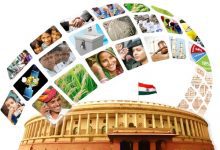Ngorang Ngora is a sunken bowl-shaped valley surrounded by high ridges on all sides and is the crater of an extinct volcano. The rich mineral land makes the vegetation lush and green throughout the year. It is fed by streams flowing into the crater and water supply is all year round. Thus, it happened that animals that wandered into the crater never left, says Soumya, in a travelogue, exclusively for Different Truths.

The last two days of our stay in Tanzania we decided to spend in a unique ecosystem, the crater of an extinct volcano
Ngorang Ngora is a sunken bowl-shaped valley surrounded by high ridges on all sides and is the crater of an extinct volcano. The rich mineral land makes the vegetation lush and green through out the year. It is fed by streams flowing into the crater and water supply is all year round. Thus, it happened that animals that wandered into the crater never left. Stray elements from the great migration of Serengeti have been moving in and flourishing in the valley. As a result, it has the highest density of wildlife anywhere on the planet.
The name Ngorang Ngora came from the sound of the cowbells of the Masai herds who grazed their cattle in the valley. Of late the Masai have been persuaded not to graze their cattle inside the crater
We stayed at a lodge on the rim and through binoculars, could spot the rich fauna in the valley. Immediately on arrival we hit pay dirt and spotted the only member of the big five that was not present in Serengeti. There were a group of rhinos by the lake in the middle of the crater.

We were lucky to witness an exciting drama of animal life. A mother rhino and her calf were strolling along, and a lion was stalking the calf. The calf noticed and squealed in alarm. The mother noticed, turned around, saw the lion and started a lumbering charge. The lion knew when it was beaten and scampered off. The rhino collected the calf and disappeared in the shrubbery.
The next day we descended into the crater. The first sight that greeted us was a perfect example of the food chain.
A gnu was being devoured by a pack of lions, one of the seven prides that reigned over the crater, dividing the territory between them. Keeping a respectful distance around them was a ring of hyenas, waiting their turn. Short distance further back was a circle of jackals waiting patiently. On a nearby tree, waiting impatiently and occasionally hopping down was a pack of vultures to feed on whatever scraps remain.
When we returned that way in the evening there was not a scrap of bone or skin to be seen, as if the feast had never happened. Only a solitary satiated hyena was dozing in the grass and lazily lifted its head to observe us.
During the day we drove around the crater basin spotting all the fauna of Tanzania at frequent intervals till we were getting quite used to it. We did spot more rhinos, but they ignored us. The cheetahs remained elusive unfortunately. We spotted six of the seven prides of lions during the day, and the seventh we saw in dramatic circumstances at dusk which I will relate now.
While we were on the road back to the lodge at dusk a further drama awaited us.

As we were entering the wooded area there was a huge commotion. A number of elephants were trumpeting simultaneously. We saw a herd of elephants stampeding and apparently running around in circles quite close to us. It was a terrifying sight.
We stood still and watched the drama unfold. The elephants made a circle with the adults facing outwards and the calves kept in the centre. Our guide explained that a pride of lions had been stalking the herd trying to isolate and kill a straggling calf. The calf noticed and raised an alarm and the herd took a defensive position.
Once the calves were secure the tusker charged the lions, scattering and driving them away.
It was a spectacular climax to our African safari.
©Soumya Mukherjee
Picture by the author





 By
By

